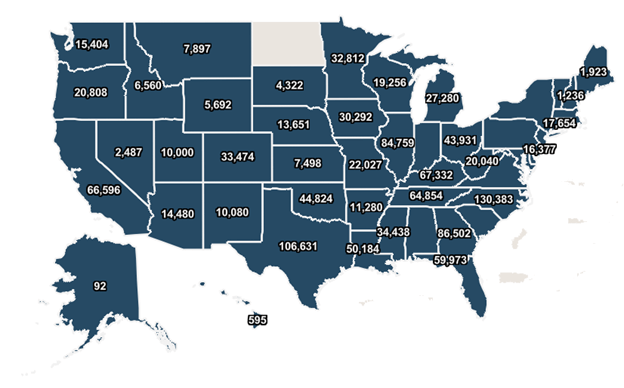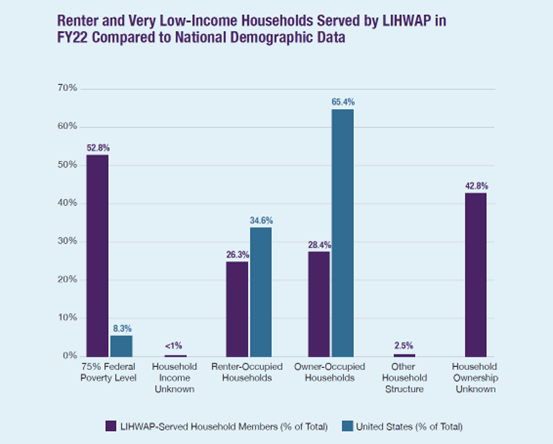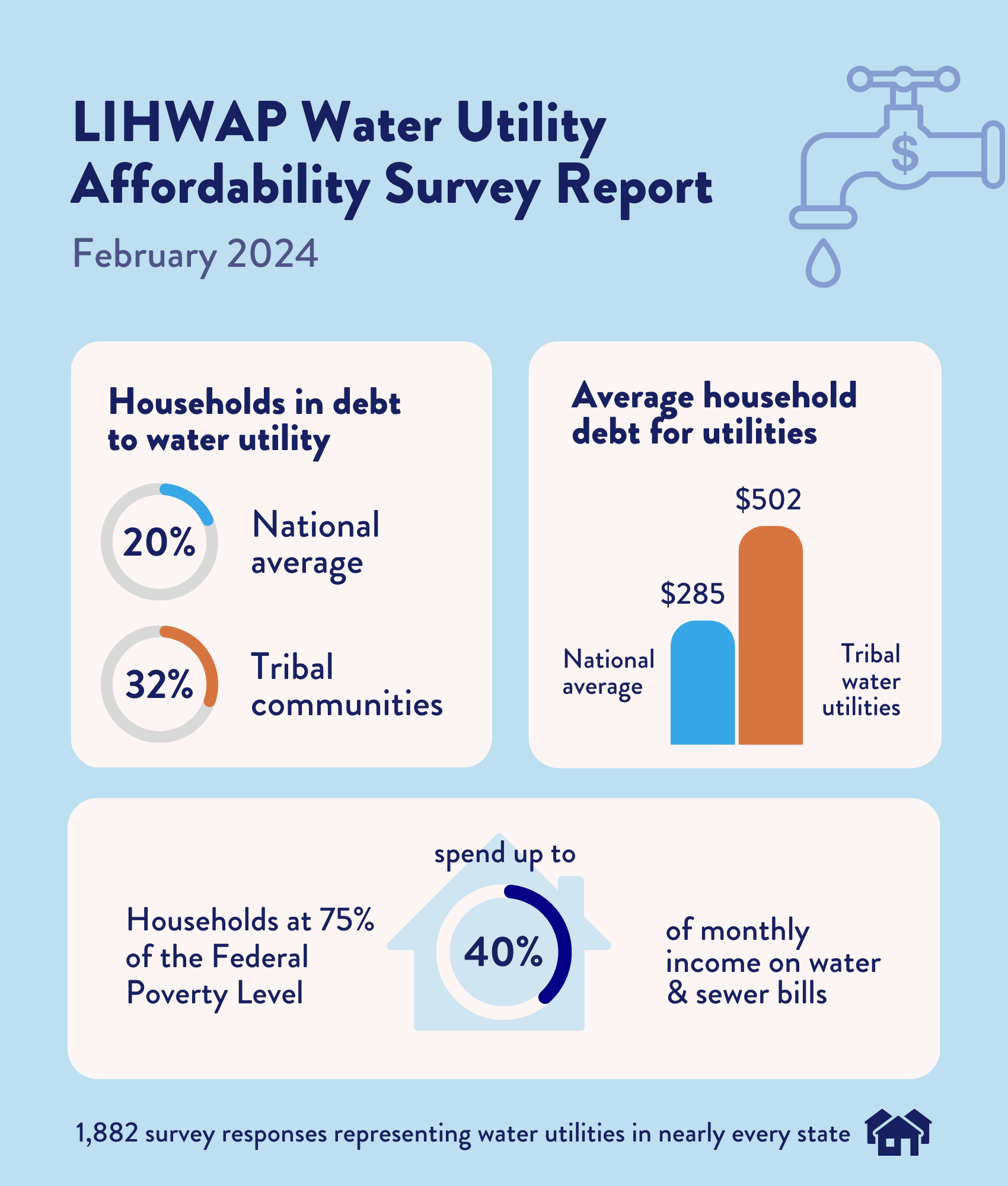Low-Income Household Water Assistance Program: Sunset or Sunrise?
This post, written by Shelby Cline, is the fifth blog post we’ve published about the Low-Income Household Water Assistance Program (LIHWAP). The program was first funded through COVID-19 legislation in the Consolidated Appropriations Act (CAA, December 2020) and the American Rescue Plan Act (ARPA, 2021). For additional background information on this program, check out our previous blogs:
- Low-Income Household Water Assistance Program: Annual Report Look Back, May 2023
- Low-Income Household Water Assistance Program Check-In, Oct 2022
- Low-Income Household Water Assistance Program Updates, May 2022
- Moving Toward Water Equity & Affordability: Low Income Household Water Assistance, April 2021

The Low-Income Household Water Assistance Program (LIHWAP) is set to sunset this year, as the remaining states finish distributing their funds and wrap up the program. Since its initiation in 2021, LIHWAP has been administered by the Department of Health and Human Services’ (HHS) Administration for Children and Families’ (ACF) Office of Community Services (OCS). The program provides bill payment assistance for low-income households’ drinking water and wastewater services. Prior to LIHWAP, there was no federal assistance program to address water-related bills or water shut-offs. Through Quarter 1 of fiscal year (FY) 2024, 1.6 million households have been served by LIHWAP, including 37,400 households administered by Tribes.
Updates as the Program Concludes – An Overview of Available Data on the Impact of LIHWAP
The original deadline for states, territories, and Tribes to obligate their funds was September 30, 2023, and funds had to be spent by the end of 2023. In July 2023, the HHS announced a No Cost Extension (NCE) for grant recipients to request a six-month extension of the original deadline, setting the new final deadline for June 30, 2024. 36 states and territories were granted extensions —approximately 65% of the total number of participating states and territories in LIHWAP. 53 Tribes, approximately 55% of the total participating number, were also granted NCEs.
The HHS has released three reports in 2024 so far, including:
- The final quarterly report from 2023
- An implementation and impact report
- Results from a nationwide utility survey on water affordability
Takeaways from the Quarterly Report Data from Sept-Dec 2023
The quarterly report features information about the progress states, territories, and Tribes made in distributing funds by the end of 2023. The top three states serving the most households include Georgia (86,502), Texas (106,631), and North Carolina (130,383). Around 98,000 of the households served throughout the country had their rates reduced for water or wastewater services, and about 41,000 had their water or wastewater service prevented from disconnection. In Quarter 1 of FY 24, Indiana had the most waste and waster service rate reductions, serving 40,8883 households, and Florida prevented the most disconnections, serving 11,899 households. HHS has awarded a total of $1.12 billion dollars to grant recipients, with $1.06 billion (or 95%) obligated.

Implementation and Impact: Demographics of Recipients
In their Implementation and Impact Report: Part One, released in January 2024, HHS highlights the challenges faced by low-income households regarding water affordability, citing an average increase of almost 50% in residential water bills since 2010. As many of us already know, water affordability challenges disproportionately affect low-wealth communities and communities of color. In FY 22, American Indians, Alaska Natives, and African Americans were “overrepresented” among the households served by LIHWAP, along with households under 75% of the Federal Poverty Level, meaning there were higher percentages of these demographic groups when compared to national demographic data. Renters composed 26% of households in the first two years of the program, and grant recipients reported challenges serving individuals that paid water fees directly to a landlord.

An Initial Attempt to Fill the Water Affordability Data Gap: Water Utility Survey and Results
Water affordability takeaways continued in the February 2024 LIHWAP Water Utility Affordability Survey Report. It is the largest survey that has been conducted in the country that provides one dataset on information such as water rates, disconnections, fees, and arrears. Of the 1,882 responses, almost every state was represented. The results found that:
- an average of 20% of households are in debt to their water utility, increasing to 32% of households on average for tribal communities;
- households at 75% of the federal poverty level spend up to 40% of their monthly income on water and sewer bills;
- and the average household debt for utilities is $285, but for tribally owned utilities it increases to $502.
Water advocates have long been pushing for more comprehensive data collection to demonstrate the scope and depth of water affordability issues, including arrearages (overdue money that is owed), fees, shutoff rates, and more. The data collected by HHS through this survey is an important contribution to closing that data gap, but we need consistent and more widespread data collection to truly make representative conclusions about water affordability concerns in the US. In 2024, the EPA is launching its first ever Water Affordability Needs Assessment, which was authorized in the Bipartisan Infrastructure Law (BIL).

The Future of LIHWAP
So, what happens now to LIHWAP? Funding for the program has expired for 2024, despite calls for its renewal by River Network and other organizations. In October 2023, Representatives Tlaib (MI-12), Dingell (MI-06), and Blunt Rochester (DE) introduced the Water Access Act, which would have directed $500 million in funding for LIHWAP in FY24. More recently, in March 2024, Senator Padilla (CA) introduced the LIHWAP Establishment Act. The Act would re-establish LIHWAP with HHS as it currently exists, until the completion of a water assistance pilot program authorized in the Bipartisan Infrastructure Law (BIL) would transfer LIHWAP to the Environmental Protection Agency (EPA). The LIHWAP Establishment Act would also provide technical assistance to underserved public water systems and treatment works, along with aligning income eligibility for the program with other pre-existing social services, like ones for veterans.
There are current attempts by at least twenty-five senators and twenty-three house representatives to fund an extension of LIHWAP in FY25 appropriations, but it’s uncertain if those efforts will come to fruition. A permanent program, such as the one proposed by Senator Padilla, could exist within the HHS, EPA, or even the US Department of Agriculture (USDA). The National Association of Clean Water Agencies (NACWA) published an assessment that explains the various alternatives and pathways for a permanent program, and IB Environmental (who co-authored the NACWA assessment) wrote a blog about the end of the current program.
Importance of Water Assistance and Affordability
If anything has become clear since the inception of LIHWAP, it’s that drinking water and wastewater services must be affordable. Some customer assistance programs exist at the state level (see River Network’s Water Affordability State Policy Hub), as well as at the local level, provided by utilities, but LIHWAP is the first program of its kind at the national level. More momentum is building around making water accessible, clean, and affordable. The Water Equals Life coalition, a state-focused group based in Michigan, is one such example of groups helping build a foundation of water affordability for low-wealth residents. At the national level, members of the Water Equity and Climate Resilience Caucus (WECR) are actively working with lawmakers and agency staff to build a vision – and a tangible program with funding – for a permanent program (read more here!).
As we continue monitoring – and advocating for – federal efforts to permanently establish a water assistance program, it’s important to recognize that people still will need support in the interim. Here are a few tips if you or someone you know can’t afford their water or wastewater bills:
- Review your water bills for any major changes in charges or use
- Check for leaks or plumbing problems with your fixtures
- Get credit from your utility for reducing leaks or making water-efficient purchases
- Check that your water meter is working properly
- Contact your water system to resolve any discrepancies
- Make a good faith payment to your utility
- Request outside help from community organizations, such as United Way
- Check to see if any customer assistance programs exist for your water system
Read about each of these steps and more in River Network’s Drinking Water Guide.




